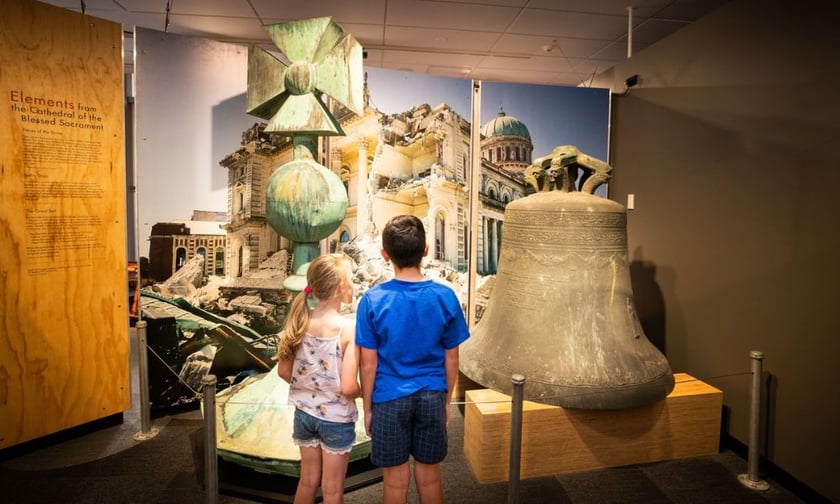

The Natural Hazards Commission Toka Tū Ake (Natural Hazards Commission) has partnered with schools and museums throughout New Zealand to educate young people on natural hazards and disaster preparedness.
These collaborations are designed to increase awareness among tamariki (children) and rangatahi (youth) about the geological forces that shape the country.
The initiative supports this year’s International Day for Disaster Risk Reduction theme, which focuses on empowering the next generation to contribute to a resilient future.
At Wellington’s Te Papa museum, students can participate in earthquake simulations through the Earthquake House and gain insights into how tsunamis form via interactive exhibits. These hands-on experiences aim to deepen young people’s understanding of earthquake risks, volcanic activity, and New Zealand’s overall vulnerability to natural disasters.
Similarly, the “Volcanoes!” exhibit at Auckland Museum provides students with immersive experiences related to volcanic eruptions and even offers an outreach program that visits schools to teach children about Auckland’s volcanic field.
In Christchurch, the Quake City exhibition at Canterbury Museum explores the impact of the 2010 and 2011 Canterbury earthquakes. This exhibit helps young visitors understand the community’s response to the disasters and the importance of being prepared for future events.
Beyond museum programs, virtual learning has become an essential tool in disaster education.
Through LEARNZ/CORE Education, students can take virtual field trips to significant geological sites like Mt Taranaki and the Alpine Fault. These virtual experiences allow students to explore New Zealand’s natural hazards and their potential impacts without leaving the classroom. The curriculum-supported trips are intended to bolster students’ understanding of disaster risk and preparedness.
Online tools also play a role in educating New Zealand’s youth. The “What’s The Plan, Stan?” game teaches kids about preparing for emergencies by assembling emergency kits, securing household items, and learning key safety procedures for different disaster scenarios.
The East Coast LAB initiative extends education into the community, bringing scientists and emergency managers to schools to discuss natural hazards and ways to mitigate risks.
Further educational resources include the “What’s On Our Plates?” series, which provides online modules aligned with the New Zealand science curriculum. These resources aim to foster interest in earth sciences and natural hazards, helping teachers integrate disaster preparedness into their lessons.
These disaster education efforts highlight a recent survey commissioned by the Natural Hazards Commission and conducted by NielsenIQ, showing that many New Zealand homeowners are unclear about their insurance coverage for natural disasters.
The survey found that only 33% of homeowners with insurance were confident they understood what their policies covered regarding damage caused by natural hazards. Additionally, just 26% of respondents felt certain about their coverage for land damage.
The survey underscores the need for both increased public education on disaster preparedness and better communication between insurance providers and policyholders. Homeowners are encouraged to take proactive steps to ensure they are fully informed about their insurance coverage in the event of a natural disaster.
